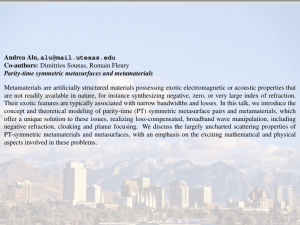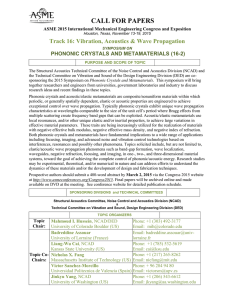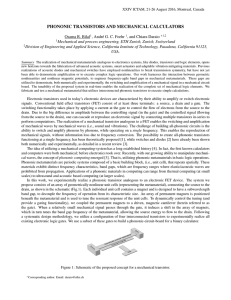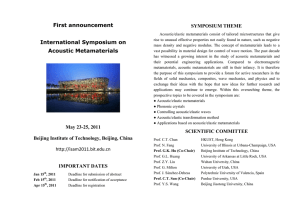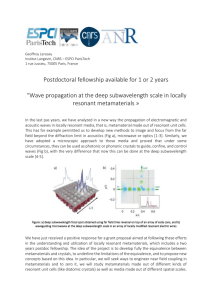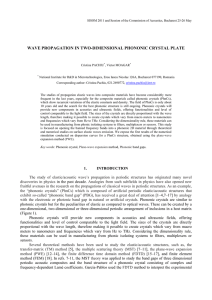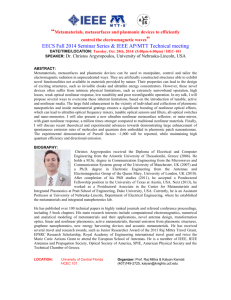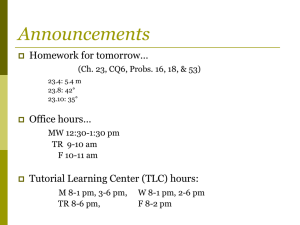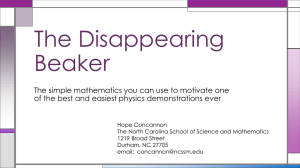Acoustic metamaterials: numerical analysis of negative
advertisement
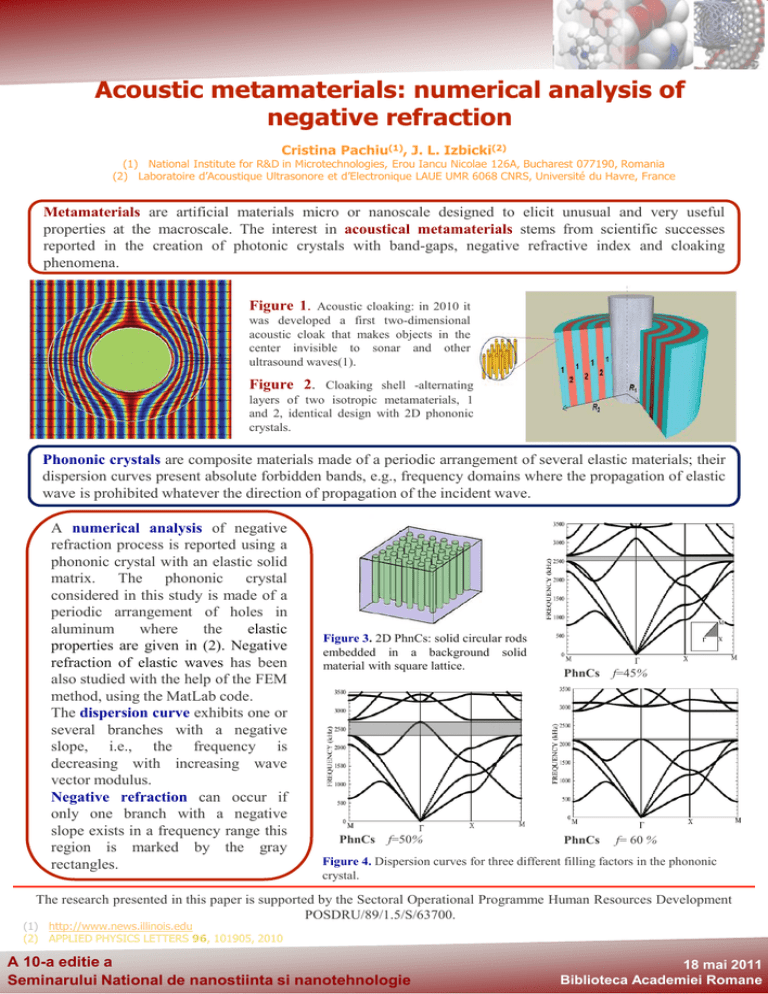
Acoustic metamaterials: numerical analysis of negative refraction Cristina Pachiu(1), J. L. Izbicki(2) (1) National Institute for R&D in Microtechnologies, Erou Iancu Nicolae 126A, Bucharest 077190, Romania (2) Laboratoire d’Acoustique Ultrasonore et d’Electronique LAUE UMR 6068 CNRS, Université du Havre, France Metamaterials are artificial materials micro or nanoscale designed to elicit unusual and very useful properties at the macroscale. The interest in acoustical metamaterials stems from scientific successes reported in the creation of photonic crystals with band-gaps, negative refractive index and cloaking phenomena. Figure 1. Acoustic cloaking: in 2010 it was developed a first two-dimensional acoustic cloak that makes objects in the center invisible to sonar and other ultrasound waves(1). Figure 2. Cloaking shell -alternating layers of two isotropic metamaterials, 1 and 2, identical design with 2D phononic crystals. Phononic crystals are composite materials made of a periodic arrangement of several elastic materials; their dispersion curves present absolute forbidden bands, e.g., frequency domains where the propagation of elastic wave is prohibited whatever the direction of propagation of the incident wave. A numerical analysis of negative refraction process is reported using a phononic crystal with an elastic solid matrix. The phononic crystal considered in this study is made of a periodic arrangement of holes in aluminum where the elastic properties are given in (2). Negative refraction of elastic waves has been also studied with the help of the FEM method, using the MatLab code. The dispersion curve exhibits one or several branches with a negative slope, i.e., the frequency is decreasing with increasing wave vector modulus. Negative refraction can occur if only one branch with a negative slope exists in a frequency range this region is marked by the gray rectangles. Figure 3. 2D PhnCs: solid circular rods embedded in a background solid material with square lattice. PhnCs f=50% PhnCs f=45% PhnCs f= 60 % Figure 4. Dispersion curves for three different filling factors in the phononic crystal. The research presented in this paper is supported by the Sectoral Operational Programme Human Resources Development POSDRU/89/1.5/S/63700... (1) http://www.news.illinois.edu (2) APPLIED PHYSICS LETTERS 96, 101905, 2010 A 10-a editie a Seminarului National de nanostiinta si nanotehnologie 18 mai 2011 Biblioteca Academiei Romane
